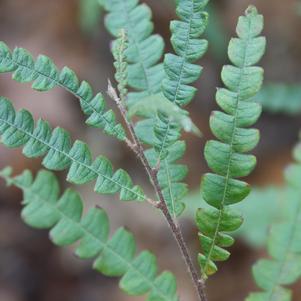General Description
Bloom Description: White, occasionally pink-tinged bell-shaped flowers appear in late May.
Growth Habit & Shape: Bearberry is a creeping evergreen that will spread out over a wide area by rooting in with stolons, remaining no taller than a few inches.
Soil Preferences: This evergreen prefers very sandy soils, rocky outcrops and well-drained sites.
Root Description: Bearberry has a tough, creeping root system with fibrous roots that shoot off the main stems.
Garden Uses: This is an attractive and excellent garden ground cover on sunny, sandy banks, along roadways, rock walls, rockeries, parking strips, and other sunny places in urban areas. It's a great choice for restoration and soil stabilization in open, sandy, rocky sites.
Best Management & Maintenance: This plant thrives on neglect and requires poor, sandy soils. Winter mulch, such as pine boughs, are used as cover for protection from harsh winds and deer browse. It can be slow to establish, and may need additional water during its first season depending on the soil type.
Common Problems: Biotic: no serious disease or pest problems. Deer will browse evergreen foliage in winter, so cover with pine boughs to protect the plant.
Benefits
Ornamental Value: Arctostaphylos is a wonderful evergreen groundcover for difficult, acidic, sandy, sunny locations. The flowers are attractive, small, and bell-shaped, and produce a profusion of large red berries in the fall.
Wildlife Benefits: The berries provide food for birds and mammals in late winter and deer will browse the foliage in winter. It serves as a host plant for 14 species of lepidopterans and is very interesting to the smaller of our native bees.
Other Practical/Environmental Benefits: erosion control, soil stabilization, weed suppression
Use in place of: creeping Euonymus species
Ecology
Habitat:
Coastal dunes; open areas in acidic temperate and boreal forests; high montane sites on acidic, sandy, or rocky soils.
Response to Disturbance: Bearberry has variable but resilient responses to disturbance: it will spread if a sudden opening in the canopy occurs, and it regenerates from seeds or scraps of root after more intensive disturbance such as fire. Its resistance to trampling and browsing by deer or other ungulates depends on seed provenance and ecotype, but in general the speices recovers well from occasional physical damage, and survives winters under snowpack.
Native State Distributions:
Canada: AB, BC, LB, MB, NB, NF, NS, NT, NU, ON, PE, QC, SK, YT
USA: AK, AZ, CA, CO, CT, DE, IA, ID, IL, IN, MA, MD, ME, MI, MN, MT, ND, NE, NH, NJ, NM, NN, NV, NY, OH, OR, PA, RI, SD, UT, VA, VT, WA, WI, WV, WY
Wetland indicator status: UPL
References
Return to Top
